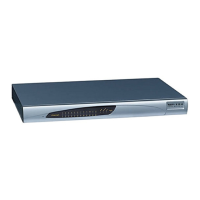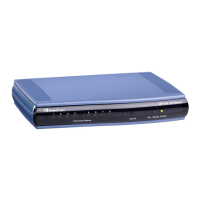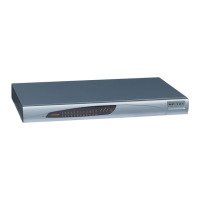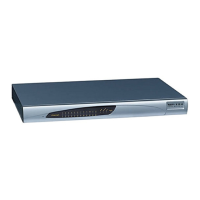Version 5.8 101 September 2009
SIP User's Manual 3. Web-Based Management
Parameter Description
Contact User Defines the user part for the From, To, and Contact headers of
SIP REGISTER messages, and the user part for the Contact
header of INVITE messages that are received from this IP
Group and forwarded by the device to another IP Group.
[IPGroup_ContactUser]
Note: This parameter is overridden by the ‘Contact User’
parameter in the ‘Account’ table (refer to ''Configuring the
Account Table'' 102 on page ).
IP Profile ID The IP Profile that you want assigned to this IP Group.
The default is 0.
[IPGroup_ProfileId]
Note: IP Profiles are configured using the parameter IPProfile
(refer to ''Configuring P Profile Settings'' 110 on page ).
Always Use Route Table
Gateway Parameters
Determines the Request URI host name in outgoing INVITE
messages.
[IPGroup_AlwaysUseRouteTable]
[0]
Disable (default).
[1] Enable = The device uses the IP address (or domain
name) defined in the 'Tel to IP Routing' table (''Configuring
the Tel to IP Routing Table'' 131 on page ) as the Request
URI host name in outgoing INVITE messages, instead of
the value entered in the 'SIP Group Name' field.
SIP Re-Routing Mode
[IPGroup_SIPReRoutingMode]
Determines the routing mode after a call redirection (i.e., a 3xx
SIP response is received) or transfer (i.e., a SIP REFER
request is received).
[0]
Standard = INVITE messages that are generated as a
result of Transfer or Redirect are sent directly to the URI,
according to the Refer-To header in the REFER message
or Contact header in the 3xx response (default).
[1] Proxy = Sends a new INVITE to the Proxy. Note:
Applicable only if a Proxy server is used and the parameter
AlwaysSendtoProxy is set to 0.
[2] Routing Table = Uses the Routing table to locate the
destination and then sends a new INVITE to this
destination.
When this parameter is set to [1] and the INVITE sent to the
Proxy fails, the device re-routes the call according to the
Standard mode [0].
Notes:
When this parameter is set to [2] and the INVITE fails, the
device re-routes the call according to the Standard mode
[0]. If DNS resolution fails, the device attempts to route the
call to the Proxy. If routing to the Proxy also fails, the
Redirect / Transfer request is rejected.
When this parameter is set to [2], the XferPrefix parameter
can be used to define different routing rules for redirected
calls.
This parameter is ignored if the parameter
AlwaysSendToProxy is set to 1.

